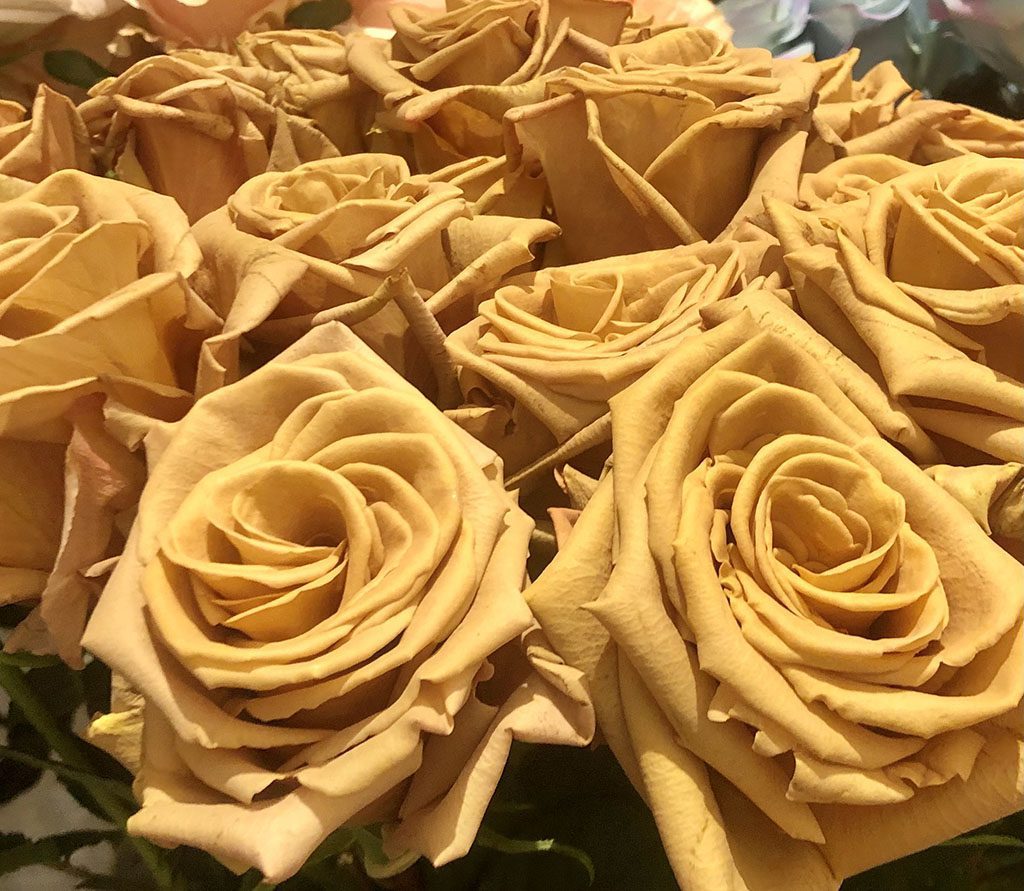
The “Toffee” rose took years to develop and bring to market. The Quality column in the September/October issue of Floral Management explores how new varieties of flowers are developed.
Given the high demand of ‘Toffee’, a caramel-colored rose perfect for so many brides’ dusty-neutral palettes, many florists may wait weeks to get their hands on this coveted product. But getting it to market actually took years of cross breeding and testing, followed by months of propagation. In the September/October issue of Floral Management, editor in chief Amanda Jedlinsky explores the backstory of how new varieties come into the world.
During the Society of American Florists’ Next Gen LIVE! event in Miami last summer, Jedlinsky talked with Santiago Brown, director of research and development at Ball FloraPlant, who bred ‘Toffee’ and ‘Kahala’, a peach rose.
“Plant breeding is an art and a science,” one that is extensive, expensive, time consuming and rife with failures, said Brown.
A breeder might start with up to one million seeds which produce 700,000 viable seedlings, which are evaluated and eliminated based on whether they meet the breeder’s criteria. The factors breeders consider are varied and vast. Among them: color, shape, petal count, resistance to disease, flower angle, vase life, fragrance, height, yield, drought tolerance, cold tolerance, and stem thickness. “It’s a lot of patience and resources,” Brown said. “It’s not a few shots at goal, it’s many shots, many different strategies and techniques.”
When selections have been whittled down to about 20, breeders present the flowers’ genetic “codes” to growers who test the flowers.
To learn more, including how growers evaluate prospective varieties and reproduce them with rootstock, check out “The Birth of a Rose” in the September/October issue of Floral Management.
Katie Vincent is the senior contributing editor for the Society of American Florists.






